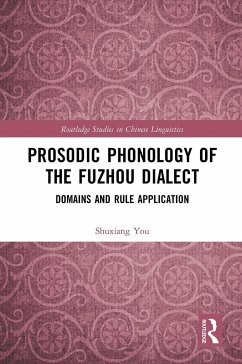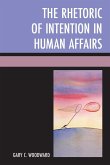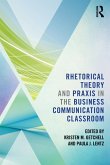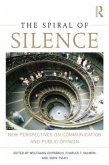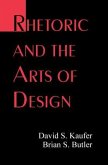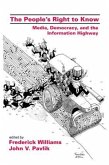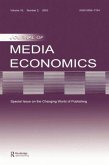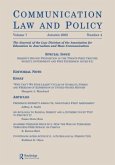- Broschiertes Buch
- Merkliste
- Auf die Merkliste
- Bewerten Bewerten
- Teilen
- Produkt teilen
- Produkterinnerung
- Produkterinnerung
Prosodic Phonology of the Fuzhou Dialect: Domains and Rule Application is the first attempt to conduct a comprehensive analysis of the Fuzhou phonological system from the perspective of prosodic phonology. It addresses the following issues: What prosodic constituents exist in the Fuzhou dialect and what kinds of roles they play in the Fuzhou phonological system; how to define the domain formation of these prosodic constituents in the Fuzhou dialect; what kinds of Fuzhou phonological phenomena make crucial reference to these prosodic constituents as the domain of application; and what…mehr
Andere Kunden interessierten sich auch für
![The Rhetoric of Intention in Human Affairs The Rhetoric of Intention in Human Affairs]() Gary C. WoodwardThe Rhetoric of Intention in Human Affairs69,99 €
Gary C. WoodwardThe Rhetoric of Intention in Human Affairs69,99 €![Rhetorical Theory and Praxis in the Business Communication Classroom Rhetorical Theory and Praxis in the Business Communication Classroom]() Rhetorical Theory and Praxis in the Business Communication Classroom60,99 €
Rhetorical Theory and Praxis in the Business Communication Classroom60,99 €![The Spiral of Silence The Spiral of Silence]() The Spiral of Silence74,99 €
The Spiral of Silence74,99 €![Rhetoric and the Arts of Design Rhetoric and the Arts of Design]() David S. KauferRhetoric and the Arts of Design69,99 €
David S. KauferRhetoric and the Arts of Design69,99 €![The People's Right To Know The People's Right To Know]() The People's Right To Know61,99 €
The People's Right To Know61,99 €![The Changing World of Publishing The Changing World of Publishing]() The Changing World of Publishing62,99 €
The Changing World of Publishing62,99 €![Siebert's Second Proposition in the Twenty-first Century Siebert's Second Proposition in the Twenty-first Century]() Siebert's Second Proposition in the Twenty-first Century62,99 €
Siebert's Second Proposition in the Twenty-first Century62,99 €-
-
-
Prosodic Phonology of the Fuzhou Dialect: Domains and Rule Application is the first attempt to conduct a comprehensive analysis of the Fuzhou phonological system from the perspective of prosodic phonology. It addresses the following issues: What prosodic constituents exist in the Fuzhou dialect and what kinds of roles they play in the Fuzhou phonological system; how to define the domain formation of these prosodic constituents in the Fuzhou dialect; what kinds of Fuzhou phonological phenomena make crucial reference to these prosodic constituents as the domain of application; and what implications does the study of the Fuzhou phonological system have for the prosodic phonology theory. This book is a valuable text for students and scholars in the field of Chinese dialectology, Min dialects, prosodic phonology, and phonology-morphosyntax interface.
Hinweis: Dieser Artikel kann nur an eine deutsche Lieferadresse ausgeliefert werden.
Hinweis: Dieser Artikel kann nur an eine deutsche Lieferadresse ausgeliefert werden.
Produktdetails
- Produktdetails
- Verlag: Routledge
- Seitenzahl: 264
- Erscheinungstermin: 29. August 2022
- Englisch
- Abmessung: 234mm x 156mm x 14mm
- Gewicht: 406g
- ISBN-13: 9781032400259
- ISBN-10: 1032400250
- Artikelnr.: 69899207
- Herstellerkennzeichnung
- Libri GmbH
- Europaallee 1
- 36244 Bad Hersfeld
- gpsr@libri.de
- Verlag: Routledge
- Seitenzahl: 264
- Erscheinungstermin: 29. August 2022
- Englisch
- Abmessung: 234mm x 156mm x 14mm
- Gewicht: 406g
- ISBN-13: 9781032400259
- ISBN-10: 1032400250
- Artikelnr.: 69899207
- Herstellerkennzeichnung
- Libri GmbH
- Europaallee 1
- 36244 Bad Hersfeld
- gpsr@libri.de
Shuxiang You is Research Assistant Professor in the Department of Linguistics and Modern Languages at the Chinese University of Hong Kong. He received his M.A. and Ph.D. in Chinese Linguistics from the University of Wisconsin-Madison in 2013 and 2017 respectively. His research interests include phonology, phonology-syntax interface, Chinese dialectology, and teaching Chinese as a second language.
Contents Acknowledgments List of Figures and Tables Abbreviations 1 Introduction 1.1 Statement of purpose 1.2 Research data 1.2.1 Published materials on the Fuzhou dialect 1.2.2 Data collection 1.3 Descriptive background on Fuzhou phonology 1.3.1 Tones in the Fuzhou dialect 1.3.2 Finals in the Fuzhou dialect 1.3.3 Initials in the Fuzhou dialect 1.3.4 Structure of Fuzhou syllables 1.3.5 Phonological rules in the Fuzhou dialect 1.3.6 Summary 1.4 Theoretical background: the prosodic phonology theory 1.4.1 The development of the prosodic phonology theory 1.4.2 Basic tenets of the prosodic phonology theory 1.4.3 Outstanding issues in the prosodic phonology theory 1.5 Research structure and organization 2 Syllable and foot in the Fuzhou dialect 2.1 Syllable: the domain of FA in the Fuzhou dialect 2.2 Foot as a domain of rule application in Fuzhou: a good choice or not? 2.2.1 Introduction: the foot as a prosodic domain across languages 2.2.2 Previous studies on the foot in the Fuzhou dialect 2.2.3 Additional arguments against the foot as a domain of rule application in the Fuzhou dialect 2.2.4 Summary 2.3 Summary 3 Prosodic word: domain of lexical-level rule application in the Fuzhou dialect 3.1 Introduction 3.1.1 Definition of the prosodic word and its domain formation 3.1.2 The prosodic word as a prosodic domain across languages 3.2 Morphosyntactic word formation in the Fuzhou dialect 3.2.1 Monomorphemic words 3.2.2 Derived words 3.2.3 Compounds 3.2.4 Reduplication: "diminutive" nouns 3.2.5 Reduplication: sound-splitting words 3.2.6 Reduplication: reduplicated adjectives 3.2.7 Summary 3.3 Fuzhou morphosyntactic words and lexical-level phonological rule application 3.3.1 Application of TS in Fuzhou morphosyntactic words 3.3.2 Application of MTS in Fuzhou morphosyntactic words 3.3.3 Application of FC in Fuzhou morphosyntactic words 3.3.4 Application of CL in Fuzhou morphosyntactic words 3.3.5 Summary 3.4 Lexical-level phonological rule application and the prosodic word domain in the Fuzhou dialect 4 Enclitics and Type A clitic group in the Fuzhou dialect 4.1 Introduction 4.1.1 Definition of clitics and common properties of clitics 4.1.2 Definition of the clitic group and evidence for the clitic group domain across languages 4.2 Enclitics in the Fuzhou dialect and their morphosyntactic functions 4.2.1 Possessive/modificational/nominalization marker
[ki0] 4.2.2 Adjective reduplication markers
[si
213],
[sei
23], and
[luö23] 4.2.3 Aspect markers 4.2.4 Post-verbal particles 4.2.5 Locative marker
[l
0] 4.2.6 Recursive clitic group with enclitics 4.2.7 Summary 4.3 Phonological phenomena within Type A clitic group in the Fuzhou dialect 4.3.1 TS within Type A clitic group 4.3.2 FC within Type A clitic group 4.3.3 CL within Type A clitic group 4.3.4 Summary 4.4 Violation of SLH within Type A clitic group 4.5 Summary 5 Phonological phrase: domain of phrasal-level rule application in the Fuzhou dialect 5.1 Application of TS at the phrasal level 5.1.1 The nature of the problem 5.1.2 Previous analyses 5.1.3 Which is a better solution: RBA or EBA? 5.1.4 An alternative approach to phonological phrasing in the Fuzhou dialect 5.1.5 Summary 5.2 Application of FC at the phrasal level 5.3 Application of CL at the phrasal level 5.4 Summary 6 Proclitics and Type B clitic group in the Fuzhou dialect 6.1 Proclitics in the Fuzhou dialect and their morphosyntactic functions 6.1.1 Progressive aspect marker
[l
31] 6.1.2 Auxiliary verbs
[sei242] and
[
ou242] 6.1.3 Prepositions
[tsuö44] and
[ky
44] 6.1.4 Recursive clitic group with proclitics 6.1.5 Summary 6.2 Phonological phenomena within Type B clitic group in the Fuzhou dialect 6.2.1 TS within Type B clitic group 6.2.2 FC within Type B clitic group 6.2.3 CL within Type B clitic group 6.2.4 Summary and discussion 6.3 Violation of SLH within Type B clitic group 6.4 Summary 7 Intonational phrase in Fuzhou: variability in domain formation and rule application 7.1 Definition and restructuring of the intonational phrase in the Fuzhou dialect 7.1.1 Definition of the intonational phrase in the Fuzhou dialect 7.1.2 Restructuring of the intonational phrase in the Fuzhou dialect 7.1.3 Summary 7.2 Rule application within the intonational phrase in the Fuzhou dialect 7.2.1 Introduction: variability in
-domain rule application across languages 7.2.2 Blocking of phonological rules across
boundaries in the Fuzhou dialect 7.2.3 Optional rule application within intonational phrase in the Fuzhou dialect 7.2.4 Summary 7.3 Summary 8 Concluding remarks 8.1 Prosodic domains and rule application in the Fuzhou dialect 8.2 Theoretical issues regarding prosodic phonology 8.3 Future research References Index
[ki0] 4.2.2 Adjective reduplication markers
[si
213],
[sei
23], and
[luö23] 4.2.3 Aspect markers 4.2.4 Post-verbal particles 4.2.5 Locative marker
[l
0] 4.2.6 Recursive clitic group with enclitics 4.2.7 Summary 4.3 Phonological phenomena within Type A clitic group in the Fuzhou dialect 4.3.1 TS within Type A clitic group 4.3.2 FC within Type A clitic group 4.3.3 CL within Type A clitic group 4.3.4 Summary 4.4 Violation of SLH within Type A clitic group 4.5 Summary 5 Phonological phrase: domain of phrasal-level rule application in the Fuzhou dialect 5.1 Application of TS at the phrasal level 5.1.1 The nature of the problem 5.1.2 Previous analyses 5.1.3 Which is a better solution: RBA or EBA? 5.1.4 An alternative approach to phonological phrasing in the Fuzhou dialect 5.1.5 Summary 5.2 Application of FC at the phrasal level 5.3 Application of CL at the phrasal level 5.4 Summary 6 Proclitics and Type B clitic group in the Fuzhou dialect 6.1 Proclitics in the Fuzhou dialect and their morphosyntactic functions 6.1.1 Progressive aspect marker
[l
31] 6.1.2 Auxiliary verbs
[sei242] and
[
ou242] 6.1.3 Prepositions
[tsuö44] and
[ky
44] 6.1.4 Recursive clitic group with proclitics 6.1.5 Summary 6.2 Phonological phenomena within Type B clitic group in the Fuzhou dialect 6.2.1 TS within Type B clitic group 6.2.2 FC within Type B clitic group 6.2.3 CL within Type B clitic group 6.2.4 Summary and discussion 6.3 Violation of SLH within Type B clitic group 6.4 Summary 7 Intonational phrase in Fuzhou: variability in domain formation and rule application 7.1 Definition and restructuring of the intonational phrase in the Fuzhou dialect 7.1.1 Definition of the intonational phrase in the Fuzhou dialect 7.1.2 Restructuring of the intonational phrase in the Fuzhou dialect 7.1.3 Summary 7.2 Rule application within the intonational phrase in the Fuzhou dialect 7.2.1 Introduction: variability in
-domain rule application across languages 7.2.2 Blocking of phonological rules across
boundaries in the Fuzhou dialect 7.2.3 Optional rule application within intonational phrase in the Fuzhou dialect 7.2.4 Summary 7.3 Summary 8 Concluding remarks 8.1 Prosodic domains and rule application in the Fuzhou dialect 8.2 Theoretical issues regarding prosodic phonology 8.3 Future research References Index
Contents Acknowledgments List of Figures and Tables Abbreviations 1 Introduction 1.1 Statement of purpose 1.2 Research data 1.2.1 Published materials on the Fuzhou dialect 1.2.2 Data collection 1.3 Descriptive background on Fuzhou phonology 1.3.1 Tones in the Fuzhou dialect 1.3.2 Finals in the Fuzhou dialect 1.3.3 Initials in the Fuzhou dialect 1.3.4 Structure of Fuzhou syllables 1.3.5 Phonological rules in the Fuzhou dialect 1.3.6 Summary 1.4 Theoretical background: the prosodic phonology theory 1.4.1 The development of the prosodic phonology theory 1.4.2 Basic tenets of the prosodic phonology theory 1.4.3 Outstanding issues in the prosodic phonology theory 1.5 Research structure and organization 2 Syllable and foot in the Fuzhou dialect 2.1 Syllable: the domain of FA in the Fuzhou dialect 2.2 Foot as a domain of rule application in Fuzhou: a good choice or not? 2.2.1 Introduction: the foot as a prosodic domain across languages 2.2.2 Previous studies on the foot in the Fuzhou dialect 2.2.3 Additional arguments against the foot as a domain of rule application in the Fuzhou dialect 2.2.4 Summary 2.3 Summary 3 Prosodic word: domain of lexical-level rule application in the Fuzhou dialect 3.1 Introduction 3.1.1 Definition of the prosodic word and its domain formation 3.1.2 The prosodic word as a prosodic domain across languages 3.2 Morphosyntactic word formation in the Fuzhou dialect 3.2.1 Monomorphemic words 3.2.2 Derived words 3.2.3 Compounds 3.2.4 Reduplication: "diminutive" nouns 3.2.5 Reduplication: sound-splitting words 3.2.6 Reduplication: reduplicated adjectives 3.2.7 Summary 3.3 Fuzhou morphosyntactic words and lexical-level phonological rule application 3.3.1 Application of TS in Fuzhou morphosyntactic words 3.3.2 Application of MTS in Fuzhou morphosyntactic words 3.3.3 Application of FC in Fuzhou morphosyntactic words 3.3.4 Application of CL in Fuzhou morphosyntactic words 3.3.5 Summary 3.4 Lexical-level phonological rule application and the prosodic word domain in the Fuzhou dialect 4 Enclitics and Type A clitic group in the Fuzhou dialect 4.1 Introduction 4.1.1 Definition of clitics and common properties of clitics 4.1.2 Definition of the clitic group and evidence for the clitic group domain across languages 4.2 Enclitics in the Fuzhou dialect and their morphosyntactic functions 4.2.1 Possessive/modificational/nominalization marker
[ki0] 4.2.2 Adjective reduplication markers
[si
213],
[sei
23], and
[luö23] 4.2.3 Aspect markers 4.2.4 Post-verbal particles 4.2.5 Locative marker
[l
0] 4.2.6 Recursive clitic group with enclitics 4.2.7 Summary 4.3 Phonological phenomena within Type A clitic group in the Fuzhou dialect 4.3.1 TS within Type A clitic group 4.3.2 FC within Type A clitic group 4.3.3 CL within Type A clitic group 4.3.4 Summary 4.4 Violation of SLH within Type A clitic group 4.5 Summary 5 Phonological phrase: domain of phrasal-level rule application in the Fuzhou dialect 5.1 Application of TS at the phrasal level 5.1.1 The nature of the problem 5.1.2 Previous analyses 5.1.3 Which is a better solution: RBA or EBA? 5.1.4 An alternative approach to phonological phrasing in the Fuzhou dialect 5.1.5 Summary 5.2 Application of FC at the phrasal level 5.3 Application of CL at the phrasal level 5.4 Summary 6 Proclitics and Type B clitic group in the Fuzhou dialect 6.1 Proclitics in the Fuzhou dialect and their morphosyntactic functions 6.1.1 Progressive aspect marker
[l
31] 6.1.2 Auxiliary verbs
[sei242] and
[
ou242] 6.1.3 Prepositions
[tsuö44] and
[ky
44] 6.1.4 Recursive clitic group with proclitics 6.1.5 Summary 6.2 Phonological phenomena within Type B clitic group in the Fuzhou dialect 6.2.1 TS within Type B clitic group 6.2.2 FC within Type B clitic group 6.2.3 CL within Type B clitic group 6.2.4 Summary and discussion 6.3 Violation of SLH within Type B clitic group 6.4 Summary 7 Intonational phrase in Fuzhou: variability in domain formation and rule application 7.1 Definition and restructuring of the intonational phrase in the Fuzhou dialect 7.1.1 Definition of the intonational phrase in the Fuzhou dialect 7.1.2 Restructuring of the intonational phrase in the Fuzhou dialect 7.1.3 Summary 7.2 Rule application within the intonational phrase in the Fuzhou dialect 7.2.1 Introduction: variability in
-domain rule application across languages 7.2.2 Blocking of phonological rules across
boundaries in the Fuzhou dialect 7.2.3 Optional rule application within intonational phrase in the Fuzhou dialect 7.2.4 Summary 7.3 Summary 8 Concluding remarks 8.1 Prosodic domains and rule application in the Fuzhou dialect 8.2 Theoretical issues regarding prosodic phonology 8.3 Future research References Index
[ki0] 4.2.2 Adjective reduplication markers
[si
213],
[sei
23], and
[luö23] 4.2.3 Aspect markers 4.2.4 Post-verbal particles 4.2.5 Locative marker
[l
0] 4.2.6 Recursive clitic group with enclitics 4.2.7 Summary 4.3 Phonological phenomena within Type A clitic group in the Fuzhou dialect 4.3.1 TS within Type A clitic group 4.3.2 FC within Type A clitic group 4.3.3 CL within Type A clitic group 4.3.4 Summary 4.4 Violation of SLH within Type A clitic group 4.5 Summary 5 Phonological phrase: domain of phrasal-level rule application in the Fuzhou dialect 5.1 Application of TS at the phrasal level 5.1.1 The nature of the problem 5.1.2 Previous analyses 5.1.3 Which is a better solution: RBA or EBA? 5.1.4 An alternative approach to phonological phrasing in the Fuzhou dialect 5.1.5 Summary 5.2 Application of FC at the phrasal level 5.3 Application of CL at the phrasal level 5.4 Summary 6 Proclitics and Type B clitic group in the Fuzhou dialect 6.1 Proclitics in the Fuzhou dialect and their morphosyntactic functions 6.1.1 Progressive aspect marker
[l
31] 6.1.2 Auxiliary verbs
[sei242] and
[
ou242] 6.1.3 Prepositions
[tsuö44] and
[ky
44] 6.1.4 Recursive clitic group with proclitics 6.1.5 Summary 6.2 Phonological phenomena within Type B clitic group in the Fuzhou dialect 6.2.1 TS within Type B clitic group 6.2.2 FC within Type B clitic group 6.2.3 CL within Type B clitic group 6.2.4 Summary and discussion 6.3 Violation of SLH within Type B clitic group 6.4 Summary 7 Intonational phrase in Fuzhou: variability in domain formation and rule application 7.1 Definition and restructuring of the intonational phrase in the Fuzhou dialect 7.1.1 Definition of the intonational phrase in the Fuzhou dialect 7.1.2 Restructuring of the intonational phrase in the Fuzhou dialect 7.1.3 Summary 7.2 Rule application within the intonational phrase in the Fuzhou dialect 7.2.1 Introduction: variability in
-domain rule application across languages 7.2.2 Blocking of phonological rules across
boundaries in the Fuzhou dialect 7.2.3 Optional rule application within intonational phrase in the Fuzhou dialect 7.2.4 Summary 7.3 Summary 8 Concluding remarks 8.1 Prosodic domains and rule application in the Fuzhou dialect 8.2 Theoretical issues regarding prosodic phonology 8.3 Future research References Index

